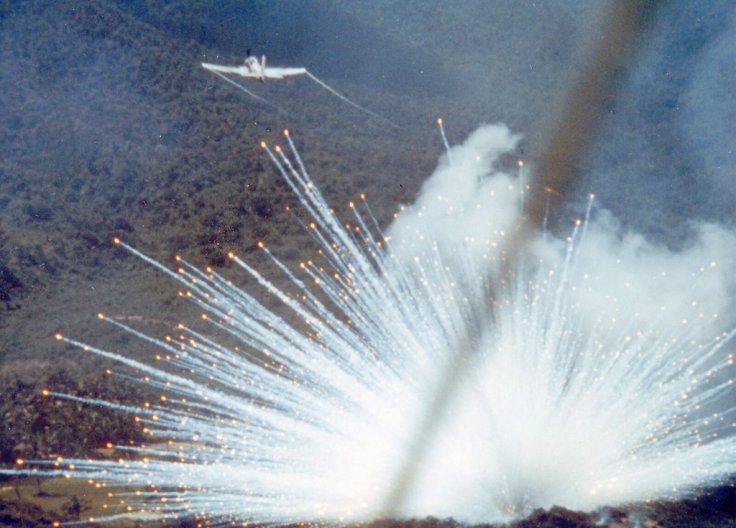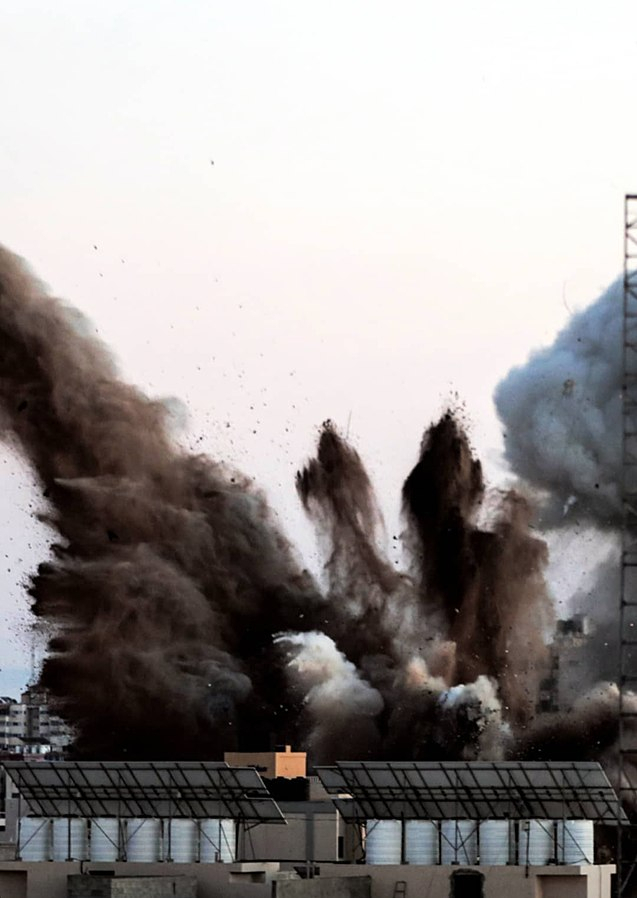Israel has said it did not use of white phosphorus bombs during its air raids on Gaza. The IDF rubbished the allegations after some Gaza officials leveled the charge that the Jewish nation used the toxic munition against the Palestinians in the coastal enclave.
The controversy over war-time ethics erupted after the Director of Civil Defense in Gaza Strip told Al-Jazeera that Israeli artillery fired as many as eight phosphorous shells at the Gaza strip.
The Palestinian Foreign Ministry also backed the claims of Gaza officials, saying that the IDF used a variety of advanced weapons against Gaza, including phosphorous bombs.
Similar charges were levelled against Israel during the 2009 confrontation between Tel Aviv and Hamas.
According to a Newsweek report in 2013, Israel said it would stop the use of white phosphorus bombs.

Israel has intensified attacks on military and intelligence targets in Gaza and the air raids have pulverized residential and commercial centers. Israel says the Hamas militants operate under the cover of residential and commercial centers. The Israeli raids continued into the second week of the conflict even as Hamas fired more than 3,000 rockets into Israel, testing the limits of the Iron Dome air defence shield.
Nearly 200 people have died in Gaza and more than 1,300 wounded, while Israel reported more than half a dozen deaths.
What are White Phosphorous Bombs?
It is not clear if Israel used white phosphorous bombs on Gaza. Though Hamas has claimed it was used, IDF has rejected such claims.
The use of white phosphorous bombs has been controversial as it has not been banned under the definition of chemical weapons.
Is it Banned?
The substance is not in the list of banned weapons under international conventions as it has some legal uses. According to some US military training manuals, the use of white phosphorous against people is banned.
It is used on battlefields to make smoke screens and generate illumination. It is also used to mark targets or burn down bunkers and towers.

The use of white phosphorous is banned for use against military targets located among civilians but the US has not signed international protocols stipulating this. But the Human Rights Watch says that "customary laws of war also prohibit the anti-personnel use of incendiary weapons so long as weapons less likely to cause unnecessary suffering are available."
How Does it Look and Feel?
White phosphorous is a colorless substance that smells like garlic and ignites on contact with oxygen. It also appears in a yellowish shade and is translucent and wax-like in feel.
What makes it a potent substance is the fact that its fire is difficult to extinguish. It also aggravates burn injuries as it sticks to flesh, causing lasting and more severe burn wounds. "Infection is common and the body's absorption of the chemical can cause serious damage to internal organs, as well as death," Human Rights Watch has said, according to Reuters.
International Law
A Reuters Factbox from 2006 says that white phosphorus is considered an incendiary weapon under international law. The Protocol III of the Convention on the Prohibition of Use of Certain Conventional Weapons helps define the substance. It comes under the category of "weapon or munition which is primarily designed to set fire to objects or to cause burn injury to persons through the action of flame, heat or combination thereof, produced by a chemical reaction of a substance delivered on the target."
Who Has Used it?
The Pentagon has said white phosphorous was used during the November 2004 attack by US Marines on the Iraqi city of Falluja.
The munition was used by the US army as part of its 'shake and bake' strategy. The bombs were used to smoke out the insurgents in holed up in covered positions, who were then hit with high-explosive artillery rounds.
The Human Rights Watch has said Israel used the bomb during its 2008-09 campaign against Gaza, code-named Operation Cast Lead.
Read more








